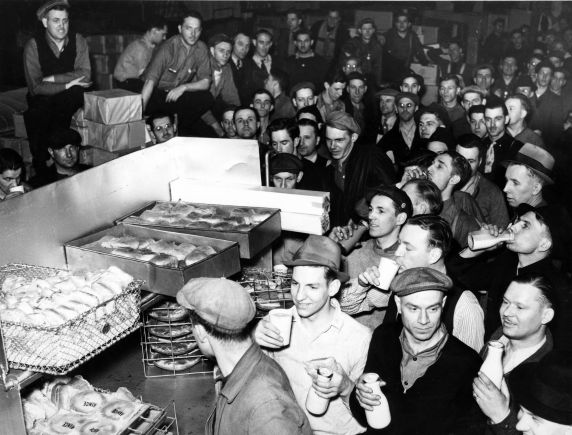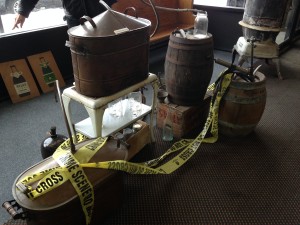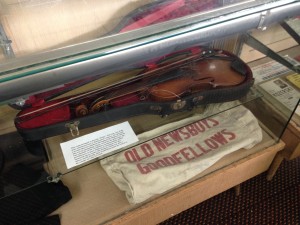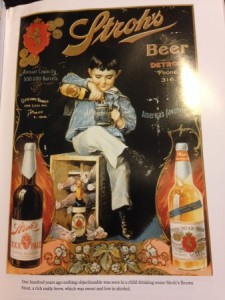Hamtramck is the center of the universe. And I’m not just saying that because I moved there five months ago. Okay, I partially am saying that because I moved there five months ago. But bear with me, and we’ll get to the nitty gritty of my night tending bar at the storied Painted Lady. See, Hamtramck is simultaneously all things Detroit, and yet, despite the fact that it is entirely surrounded by the city of Detroit, it remains its own incorporated town. If you’re interested in the why and how of it, here’s a nifty article from WDET, including a fun animated map: Why do Hamtramck and Highland Park exist inside the city of Detroit.
Hamtramck, during Prohibition and now, lays smack dab in the center of the geographic borders of the giant city of Detroit. It’s a quick shot now to I75, I94, Woodward, Davison–you name it, you can get there pretty fast from here. And before the freeways were built, when the massive Dodge Main plant went up in 1910, Hamtramck, a sleepy little farm town mostly populated by German and Irish settlers, just flat out soared in population, with hordes of Polish and eastern Europeans streaming in to work the plant. I mean, really: between 1910 and 1920, the population of Hamtramck increased from 3,589 to 46,615. That made it the fastest growing city in the US (Hamtramck City Data). Ever wonder why all the houses in Hamtramck are so crammed in, or why they’re almost all multifamily residences? It’s because the city grew so fast they were slapping up housing faster than you or I could retile a kitchen these days.

So, you take a major population increase, toss in some serious demographic changes (the Germans and the Poles have historically never been the closest of friends), stir in some Catholic-versus-Protestant antipathy, a heaping load of xenophobia, and add the chaos and lawlessness that is Prohibition, and what do you get? In Hamtramck, a whole heck of a lot of amazing stories. I recently finished my Hamtramck chapter, and let me tell you, I barely scratched the surface of the goings-on here in my new hometown. If you want a great account now about the city during Prohibition, Greg Kowalski’s, Hamtramck’s resident historian and operator of the historical museum on Joseph Campau, just released a book last week. Here’s the link: Kowalski, Arcadia Press. Go buy it now. Greg was incredibly kind and generous to me when I interviewed him a couple of months ago, and he really knows his stuff.

I could tell so many stories about Hamtramck during Prohibition. Here are just a couple of teasers, and should help to explain why I love my new hometown so much:
1) Hamtramck was so lawless it sent not one but two mayors to prison from 1920-1935. In fact, the city was so corrupt that the Michigan State Police took over all offices in 1924. One of those mayors, by the way, was so popular that despite his being absolutely and totally guilty, the citizens gathered a ton of signatures to petition the governor of the state to have him released from prison. It worked, and they threw him a massive 3-day party, and gave him a brand new Dodge car.
2) Speakeasies were everywhere. In one raid, police found 6 out of 8 houses in a row operating as speakeasies. That’s a lot of hootch.
3) Paddy McGraw’s brothel/speak was at one time said to be the largest in the Midwest. It was conveniently located on the south side of town, close by the train depot. McGraw was a character: loud, shrewd, and surprisingly generous. In fact, he founded the Hamtramck Goodfellows club, which collected donations to support “No Child Without a Christmas”. I’d love to meet the dude.

And one final rave about the city, before I dive into my night tending at the Painted Lady dive. I moved to Hamtramck in April and immediately noticed some odd quirks in my apartment. Aside from the “it might be haunted” part, the layout of the place is kind of strange: access to the upstairs apartment is via an exterior staircase in back, and the front door to my place is set at a 45 degree angle to the street. Now, normally these two signs equal former bar. I’m still digging into records, but I totally think I managed to move into a former bar/speakeasy without even knowing it. There’s fate for you!

So, the Painted Lady. It’s a fantastically divey Victorian house/bar. You might know it as Lili’s 21 Club, if you were a punk back in the day. Raucous, smelly, and full of drunk musicians of varying levels of talent, Lili’s was legendary in the 70s and 80s. Here’s an article on the demise of Lili’s: Lili’s closing, Metro Times. I absolutely commiserate with DeMaggio’s “perfectly mawkish” eulogy. And the bar is old. Really old. I’ve talked before about how tough it is to determine the “oldest bar in Detroit”. And, if we consider Hamtramck as part of Detroit, which has proven remarkably controversial–old bar aficionados do get passionate–PL might win this one, believe it or not. The Painted Lady’s current owner, Andy, is a bar history lover after my own heart. He’s laconic, sarcastic, and can be a bit shy unless you get him going on the history of his place, or of Hamtramck in general. Some time ago, he found a deed for the building dating back to, I believe, 1911. It was already a bar. Normally deeds will note the original date of the building’s construction, but in this case, the only information listed under that heading is “very old”. I’ll take their word for it.
Andy took me on a tour of the basement, which had its own bar and tables at one time. We wandered around for probably longer than he’d ever intended, while I stared at joints in bricks and at odd divots in the floor, plotting in my imagination exactly where the bartender doled out booze and where the patrons sat and stood. You all know by now that I’m a tremendously lousy photographer, so you shouldn’t be surprised by the fact that I got zero good photos out of the deal. Sorry. Instead, here’s an old Stroh’s sign advertising the health benefits of children drinking beer.

My shift went swimmingly. In fact, I was pretty darn busy, between the waves of regulars, the occasional gawking tourist who seemed stupefied by the crowd, and the birthday festivities for my friend David, who has managed to make it to every one of my ridiculous bar challenge shifts. There wasn’t much time to gather stories from the regulars, although aside from Andy, I’d say most of the regular crowd there is a bit too young to remember Lili’s back in the day. Of course, that doesn’t mean that I didn’t miss out on some history buffs; in fact, a couple weeks previous to my shift at the Lady, I talked to a friend who used to play with his band there back in the day. Seems that not too much has changed, especially not the carefree vibe and the smoke-clouded ceilings. The Painted Lady attracts folks who just want to sit down, have a beer and a shot, and not deal with trendy music or pretentious fashion. I wouldn’t necessarily call it anti-hipster, but rather timeless. And the folks who frequent the PL generally don’t give a fuck about what you’re wearing, or who you are, so long as you drink up and leave your pretensions at the door.
And, since today is National Pierogi Day, I should also note that on Tuesday nights Erica serves up the best pierogis I’ve ever tasted, from classic potato and cheese to new twists like Lox of Dill Dough, The Hippie Shit, and Spudnik.
Thanks for this article go to Steve Wilke for the Lili’s stories, Andy for letting me crash his bar shift, Erica Pietrzyk for the awesome pierogis, and John Notarianni for the apartment.
Be First to Comment